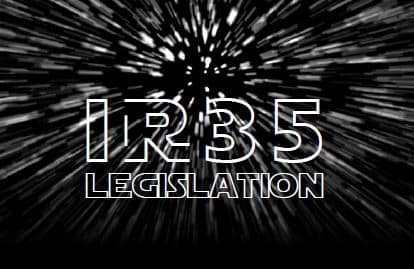IR35 Compliance
IR35 has changed. How do you now know if you're working inside IR35? We will work closely with you to set up the right processes and procedures for establishing the tax status associated with the various roles undertaken by our contractors prior to the legislation coming into force on 6 April 2021 and to implement any changes smoothly and efficiently. Download our handy IR35 eGuide to find out more.
What is IR35?
First introduced in 1999 in the UK, IR35 is a tax law. It is more formally known as the Intermediaries Legislation and came into force in April 2000 as part of the Finance Act. The income tax element of the Intermediaries Legislation has subsequently been integrated into the Income Tax (Earnings and Pensions) Act 2003 (ITEPA 2003), and the element concerning National Insurance Contributions (NICs) into the Social Security Contributions (Intermediaries) Regulations 2000.
IR35 was originally introduced to tackle the perceived problem of disguised employment. This is where workers are engaged through a third party, rather than on an employment contract to fulfil a role for the end client. This can save the end client money as it means that they are not responsible for paying Employers’ NICs for these workers, and it also means they do not have to offer any employment rights or benefits.
IR35 is intended to ensure that any individual who, but for the supply of their services through a PSC (treated, for tax purposes, as an ‘intermediary’) would otherwise be regarded as an employee of the end-client, is subject to tax and NI in the same way as a PAYE employee.
To date, the determination of whether the individual is operating inside or outside of IR35 has been the responsibility of the PSC itself against some key principles set out in case law of control, substitution and mutuality of obligation. In cases where HMRC and PSC are in disagreement about the determination the tax tribunals/courts decide the position.
How do I determine whether I am "working inside" IR35?
In short, IR35 involves applying three principles to determine the employment status with regards to workers being inside or outside the legislation. These are commonly referred to as the main tests of employment:
- Control: what degree of control does the client have over what, how, when and where the worker completes the work
- Substitution: is personal service by the worker required, or can the worker send a substitute in their place?
- Mutuality of obligation: mutuality of obligation is a concept where the employer is obliged to offer work, and the worker is obligated to accept it.
Other factors can be taken into account when determining whether workers are caught by IR35. This can include the type of contract, any financial risk associated with the assignment, being in business on your own account and whether the provision of equipment is included.
Have a question on IR35? Check our our FAQs here and if you still need help, you can contact us at contractaccounts@jonlee.co.uk.
